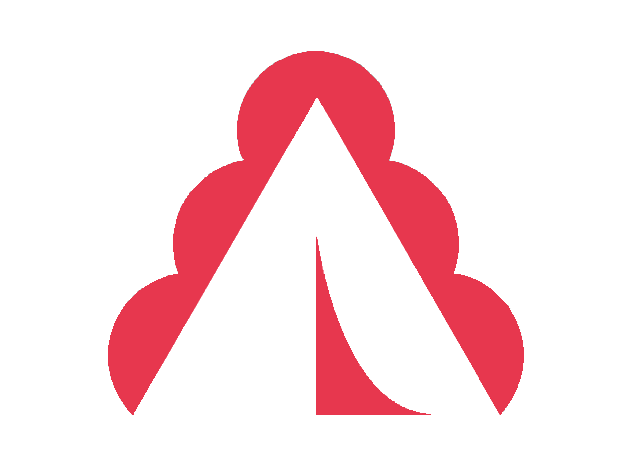Hair played a fundamental role in native culture. According to natives, hair is the manifestation of thought. Combing hair aligns thought, tying hair secures thought, and coloring hair gives thought conviction.
Some Native American hairstyles brought good fortune and health, some represented a period of mourning or merriment, and others represented a right of passage or coming of age.
And sometimes, natives chose a particular hairstyle just because it looked nice. What were these traditional Native American hairstyles? Let’s have a look.
In this article:
- Male Native American Hairstyles
- Women’s Native American Hairstyles
- Why is Native American Hair Sacred?
- Why Do Native Americans Have Long Hair?
- Why Don’t Native Americans Have Facial Hair?
Male Native American Hairstyles
One of the most common male Native American hairstyles was simple, long, flowing hair. However, some men wore braids or completely shaved their heads. Each style had many variations.
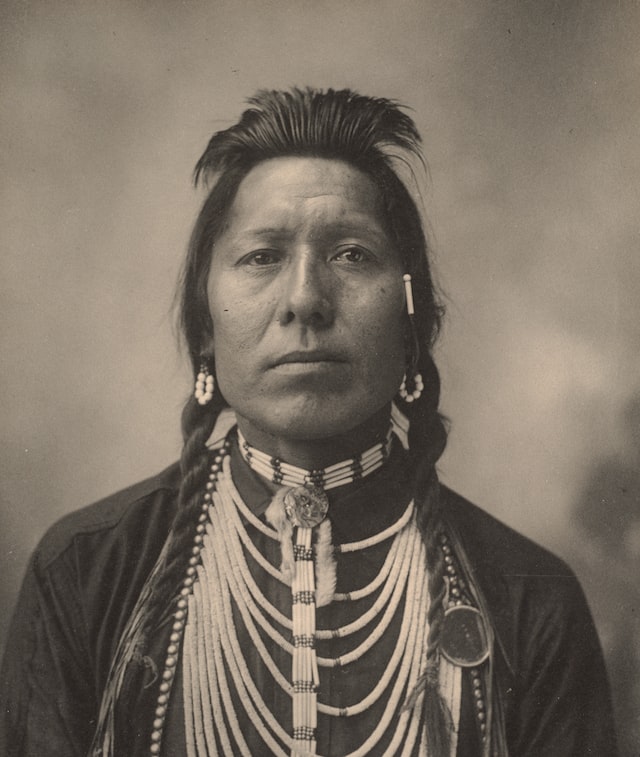
Blackfoot
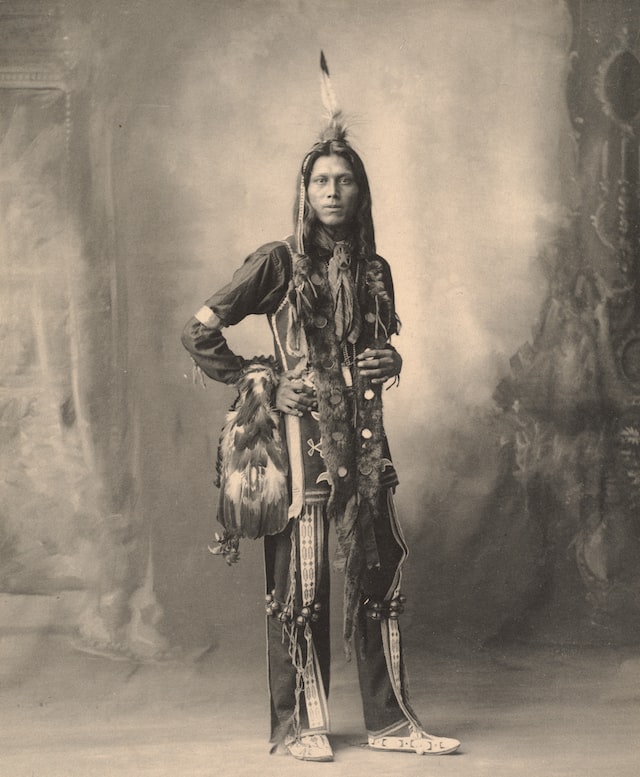
Ponca
Hair was symbolic for men in many Native American tribes, especially the Sioux and Blackfoot. Sioux and Blackfoot men only cut their hair to show grief or shame.
They often styled their bangs in different ways, including the following:
- Pompadours – stiffened with grease or clay so that it stands up
- Forelocks – a strip of hair hanging down between the eyes
- Native braids – one side braid on either side of the head, or variations
- Topknots – a tuft of hair braided or arranged into a shape on top of the head
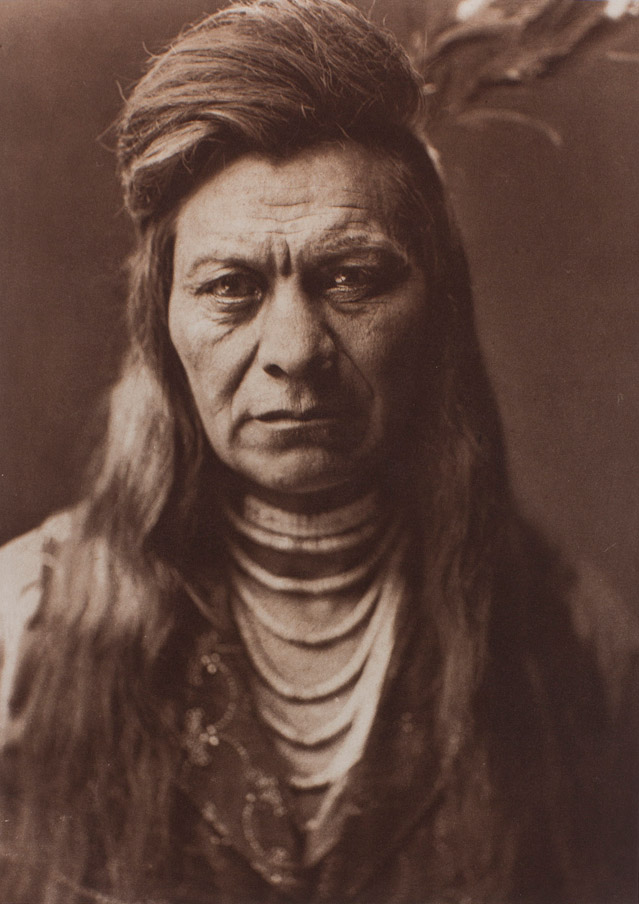
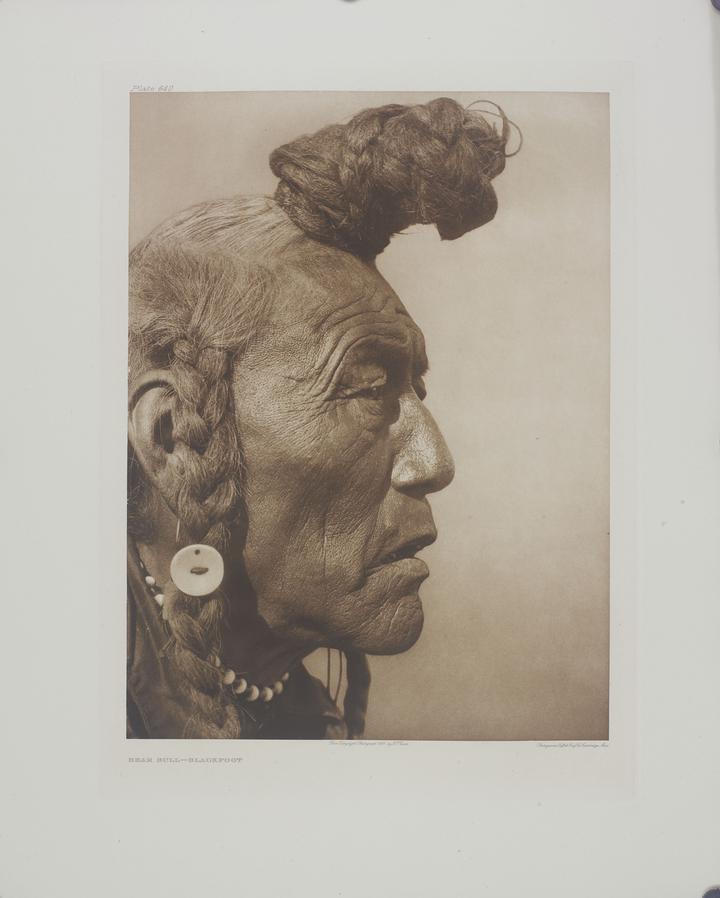
Blackfoot
Bear Bull
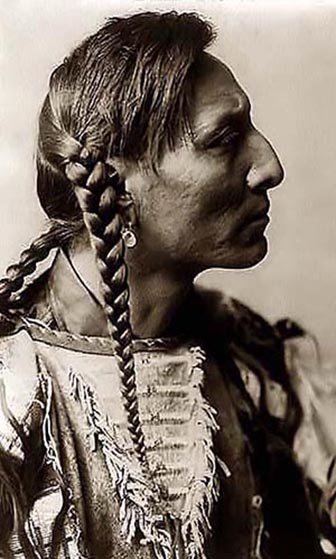
Blackfoot
However, one of the most popular traditional Native American hairstyles that has survived over the centuries is the roach, or Mohawk or Mohican.
The name originates from the tribes that wore it. A roach is a shaved head with a strip of hair running down the middle of the head, front to back.
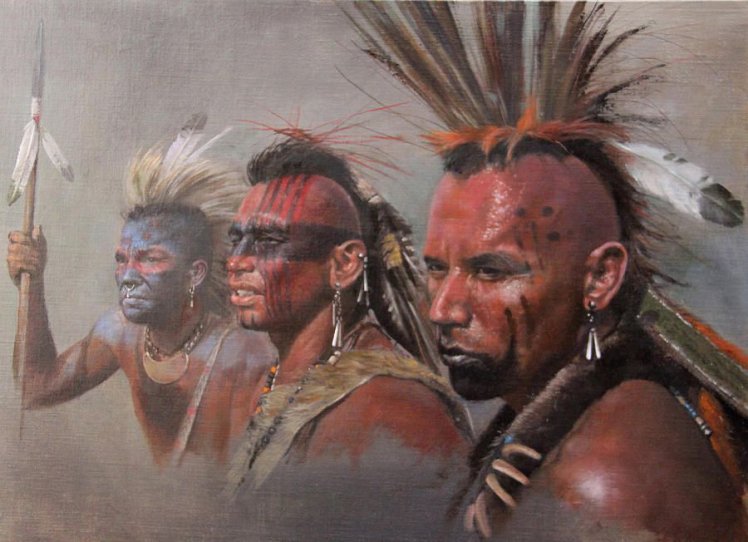
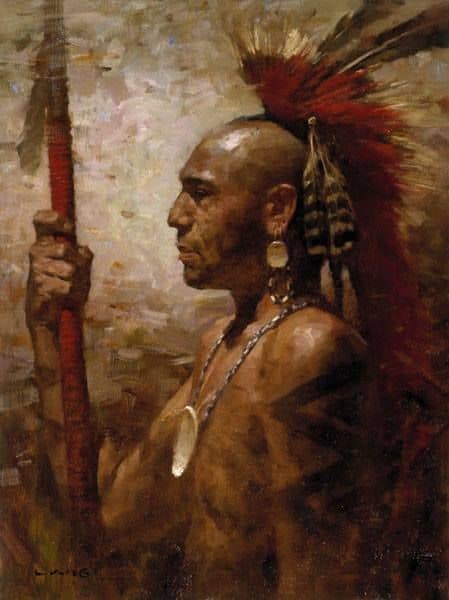
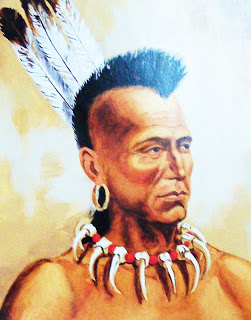
Many Native American men would decorate their roaches with deer or procupine hair or wear a completely artificial roach made of feathers and other animal hairs.
Other fascinating tribal haircuts were the scalp lock, a shaved head with a lock of hair at the top, and the tonsure, a shaved head with a fringe that circles the head.
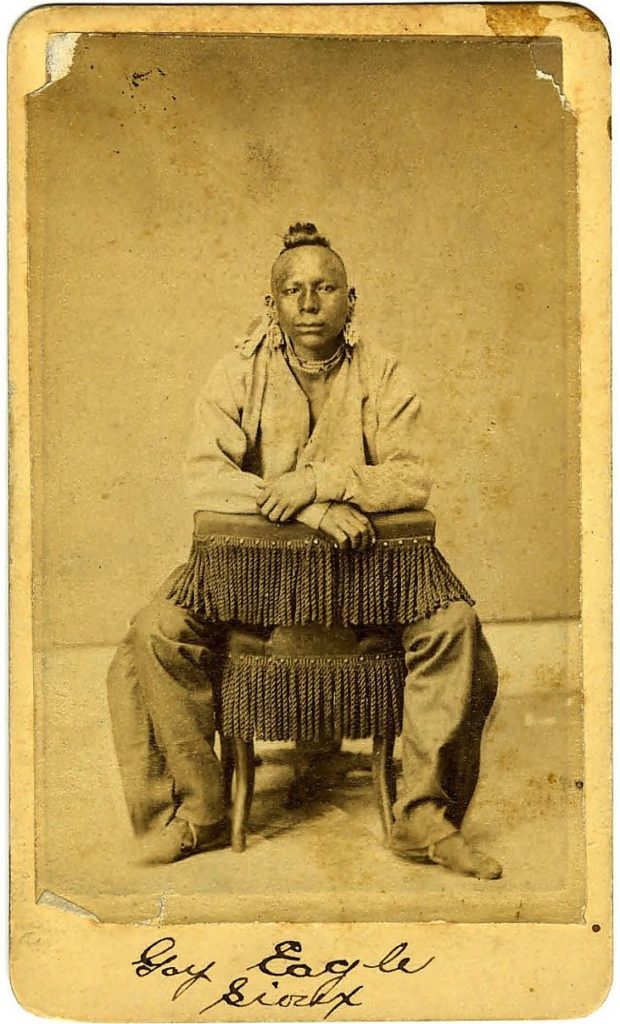
Sioux
Another interesting Native American hairstyle is the chongo, common among men and women, especially of the Pueblo tribe. This hairstyle is similar to what we call a “bun”.
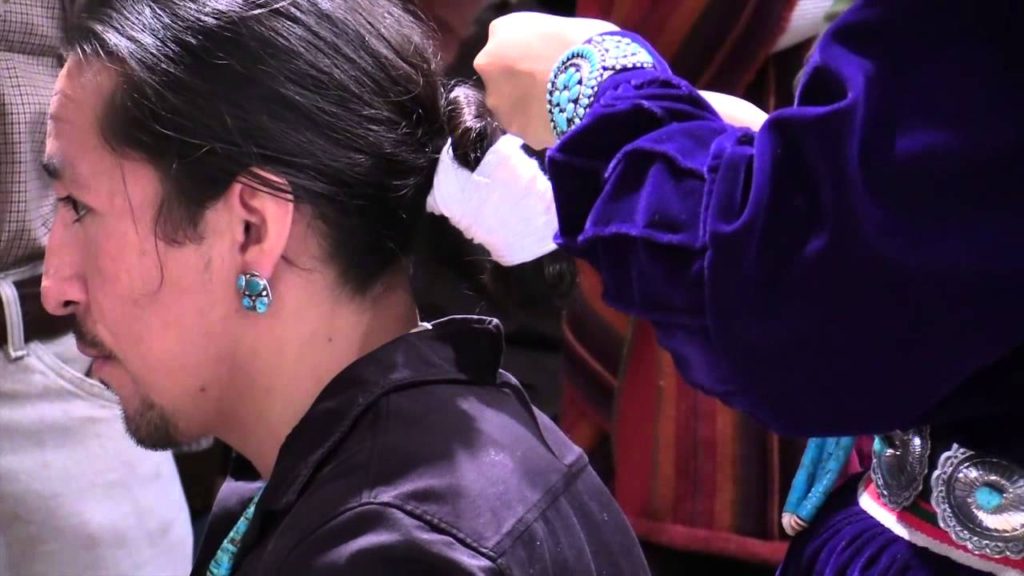
By the 19th century, bandanas became a popular male Native American hairstyle. Many tribesmen started wearing bandanas around chongos and loose, shoulder-length hair.
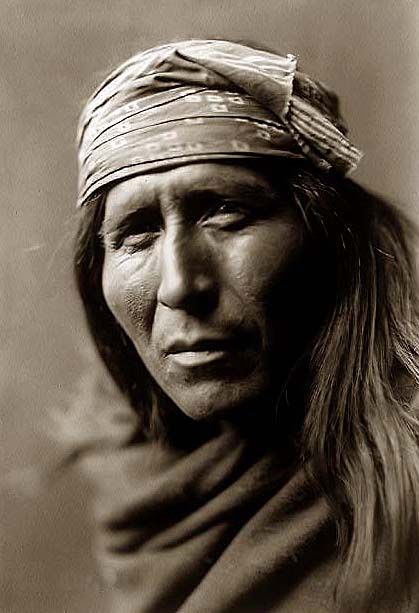
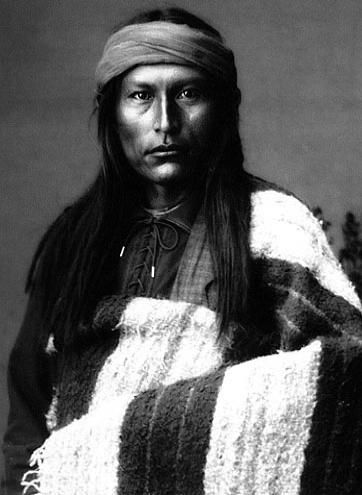
Chiricahua Apache
Naiche, Youngest son of Cochise
Many tribesmen from the Southwest rolled their hair into locks. These are now sometimes known as Native American dreadlocks (or Native American dreads).
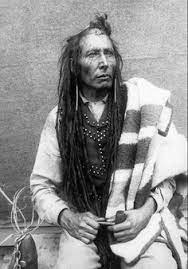
Cherokee
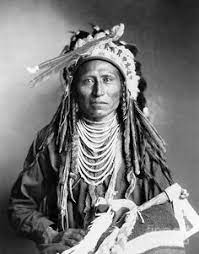
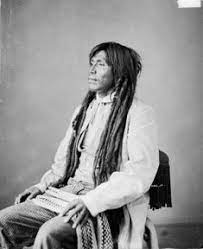
Most of the above styles are male Native American hairstyles. However, women had distinct styles of their own.
Women’s Native American Hairstyles
One of the most popular women’s Native American hairstyles was long, unbraided hair, with a part down the middle.

Flathead tribeswoman
The second most common style for females was the Native American braid.
The meaning behind the braided hairstyle differed from tribe to tribe. For example, in the Kiowa tribe, two braids meant a woman was single, while loose hair often meant a woman was married.
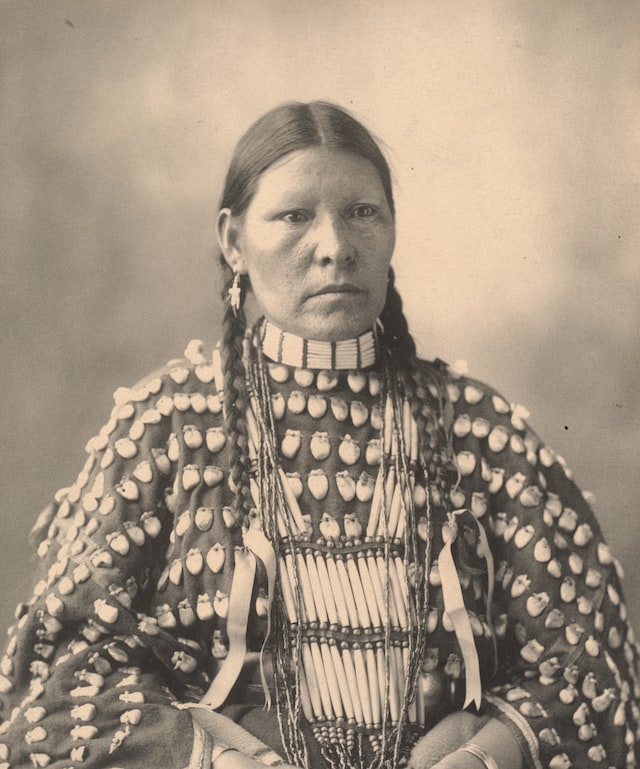
In some tribes, women would paint their hair in bright colors, as the color of hair was seen as conviction of thought.
Many women in the southeast tribes, such as the Chickasaw and Creek, wore buns or topknots (similar to the men).
In the Pueblo and Navajo tribes of the southwest, many women wore a chongo.
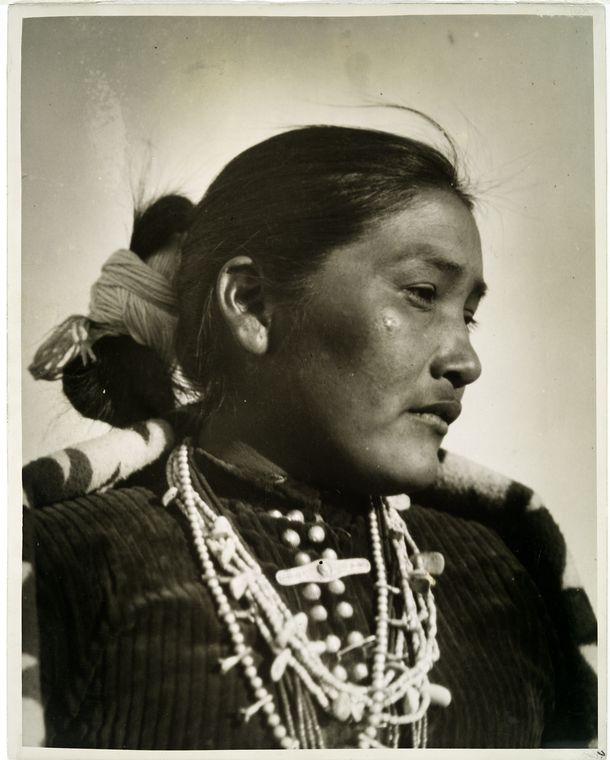
Other women from the southwest wore their hair at shoulder length.
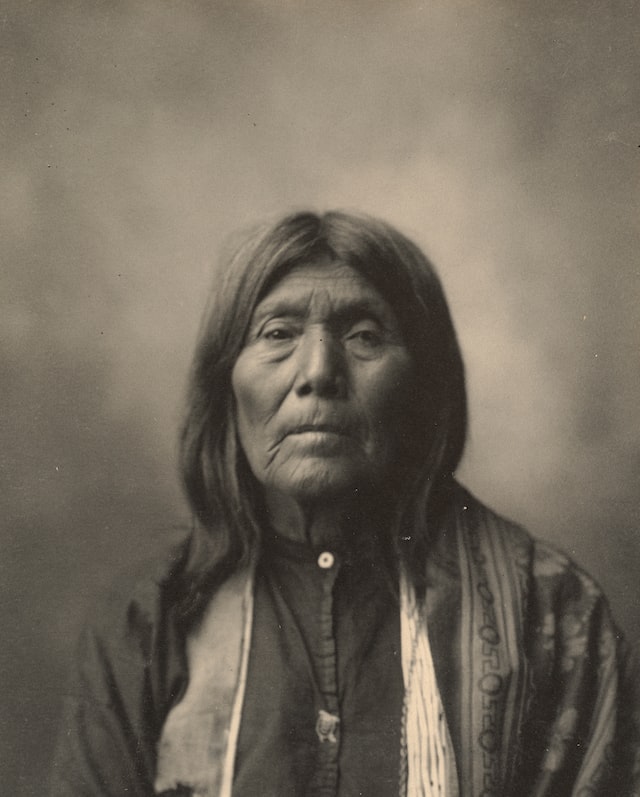
Kichai
One of the most interesting femail Native American hairstyles is the Hopi squash blossom or butterfly whorl.
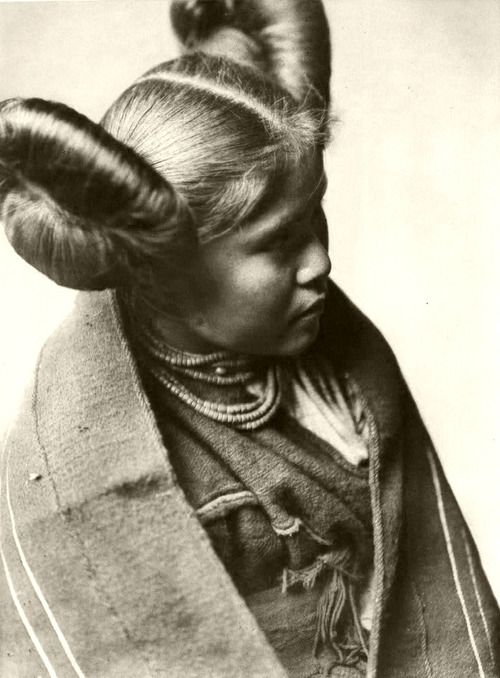
Tewa
To make this hairstyle, a woman’s mother would wrap their daughter’s hair around a curved wooden frame, remove the frame, and leave the hair standing.
Another intriguing women’s Native American hairstyle was the board (or bonnet).

Seminole
To make a bonnet, they would wrap their hair over a sheet of board, which remained under the hair.
Today, many Seminole dolls feature this traditional women’s Native American hairstyle.
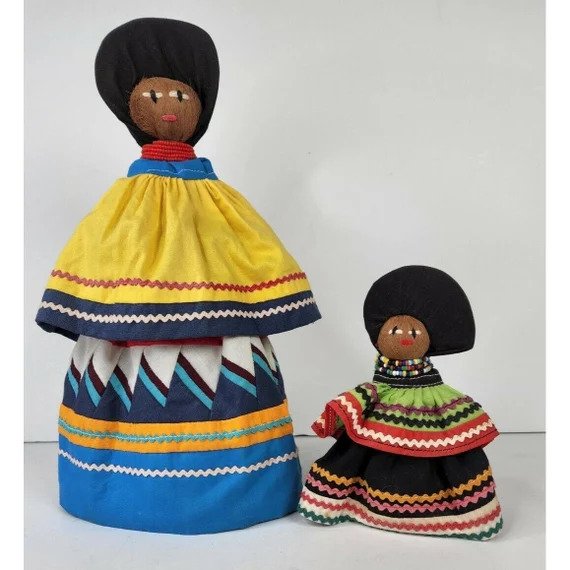
The board was popular among the Seminole tribe. However, modern women rarely wear this hairstyle.
Do Native Americans still wear these hairstyles today?
Braids and long-flowing hairstyles are still common among both men and women of various tribes throughout North America.
Some women in the southwest still wear the distinct chongo hairstyle. Many western and plains tribes still wear long hair, only cutting it when they’re mourning.
Unique hairstyles like squash blossoms, forelocks, and tribal haircuts like roaches are often only worn at cultural events. Artificial roaches are very common at powwows across North America.
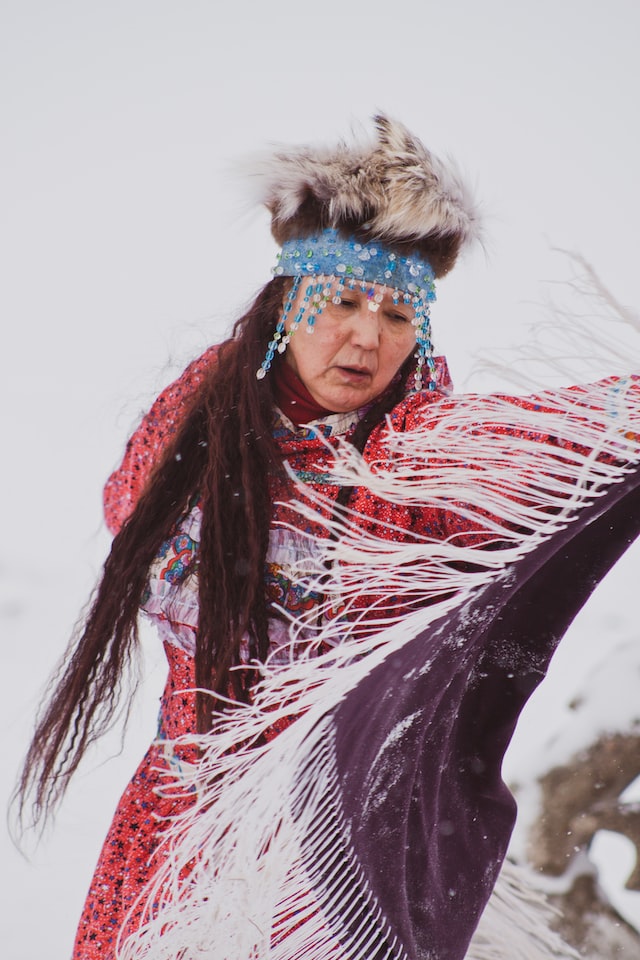

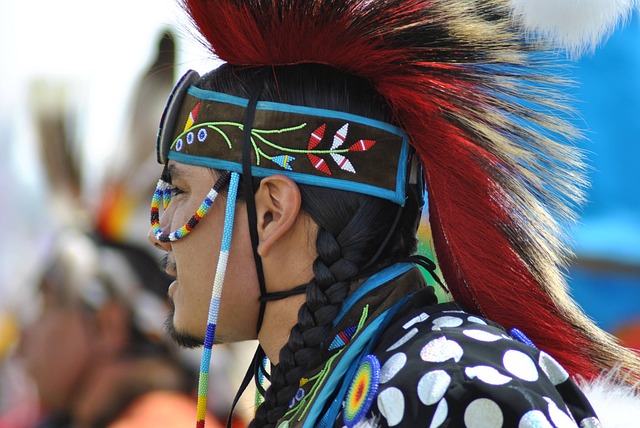
While many traditional Native American hairstyles aren’t popular anymore, many tribal beliefs and traditions around hair are still alive.
For example, touching another person’s hair can be disrespectful in the Native American community. This is one way they protect themselves from other people’s energy.
Native American Hairstyles – FAQ
Below are answers to some frequently asked questions about Native American hairstyles.
Why is Native American Hair Sacred?
Native American hair is sacred because of its connection to the spirit. For instance, long hair signifies self-respect, self-esteem, and a sense of community. Dread locks represent a connection with the divine a shaved head is a sign of mourning.
Native American hairstyles had both sacred connections and practical uses:
- Sioux and Blackfoot tribesmen cut their hair to denote shame or mourning
- A shaved head might have been a strategic decision for warriors, leaving nothing for others to grab onto
- Apache tribe members cut their hair in the spring as a ceremony to bring good fortune and health
- Seminole Indians believed their hair was sacred, wearing it in the board style, in a fan over their face, to protect it from those who may do them harm.
Why Do Native Americans Have Long Hair?
Beliefs surrounding long hair vary from tribe to tribe. However, many see long hair as a symbol of virtue and a physical manifestation of their spirit. Long hair may represent strength and power or connect one’s self to mother earth.
Can Native Americans Have Curly Hair?
Some Native American tribes were known for having curly hair, but they were not known for having tightly curled hair. Most Native American tribes had straight or wavy hair.
Why Don’t Native Americans Have Facial Hair?
Generally, Native Americans don’t have thick facial hair. Some tribes, for example, near Alaska, grew full beards. However, in other tribes, their facial hair was sparse and some men removed it altogether.
Below is a tribesman from the Alaska region with a full beard.
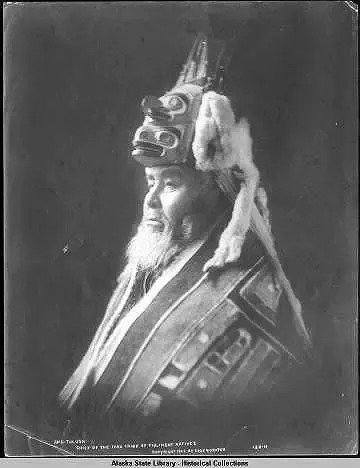
Learn more about Montana’s Native American cultures
- History of Montana’s Crow Indian Tribe [CONDENSED]
- Montana’s Northern Cheyenne Indian Reservation – Past, present, tourism
- History of Montana’s Northern Cheyenne Tribe [CONDENSED]
- History of the Bitterroot Salish Tribe [CONDENSED]
- 11 Native American Tribes that lived in Montana before colonists arrived
- Native American hairstyles
- Tasty Blackfoot foods – Five delicious meals
- Storied history of the Blackfeet Tribe [CONDENSED]
- Blackfeet Indian Reservation – Past, present, top things to do
